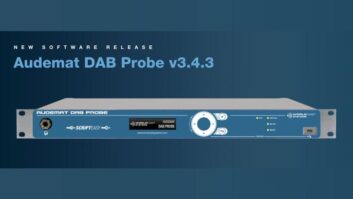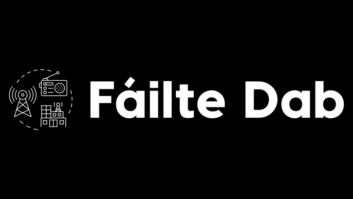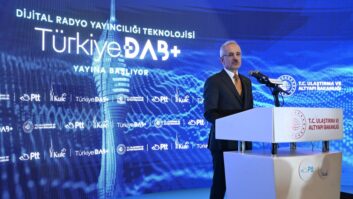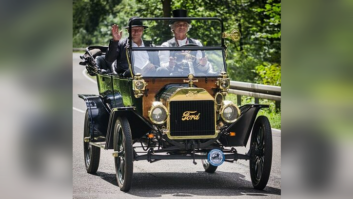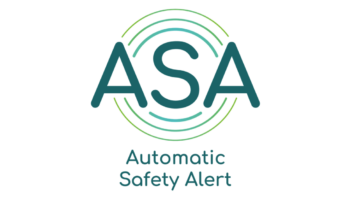The author is sales and marketing manager at 2wcom.
Goodbye to FM: Norway’s national radio service was the first in the world to switch from FM to DAB+. More European countries are about to follow suit; but how to deal with legacy equipment or complex and critical environments remains an important question.
Before we look at the possible system solutions, I would like to briefly explain the basic principles for the transmission of DAB+ under ideal conditions.

The data signals for transmission with the DAB+ standard are normally provided by a service multiplexer. In the case of dynamic messages (traffic warnings, etc.), the information is provided by other sources. In order to transmit the components relevant to a signal, an ensemble multiplexer creates a multilayered ensemble data stream, transported via IP according to the EDI standard [Encapsulation of DAB Interfaces], which often replaces the former ETI standard [Ensemble Transport Interface] for transporting the DAB multiplex via E1 lines.
This data stream contains audio, text and image, control and monitoring information. The frame structure of the DAB multiplex is structured into three channels. The “Synchronization Channel (SC)” and the “Fast Information Channel (FIC)” transport information for control and monitoring. The third channel is the “Main Service Channel (MSC)”, which is structured into subchannels, each containing one audio program or other data like images, etc. It is possible to increase transmission robustness by applying equal or unequal error protection to each subchannel, where each channel can also be protected differently. The level of error protection depends on the number of subchannels. The higher the number, the less capacity is available for error protection.
U.K. — DAB+ ETI VIA ASI
In the United Kingdom for radio broadcasting, an Asynchronous Serial Interface (ASI) network was installed to distribute the signals of a radio program. ASI is normally used for transmitting MPEG transport streams. At that time, this infrastructure had to be adapted for DAB+ distribution. The main challenge was therefore to encapsulate an ETI [Ensemble Transport Interface and predecessor to EDI] into an ASI transport stream, which was then decapsulated as an ETI stream and forwarded to the transmitter.

In order to do this, it is necessary to use a suitable converter. In the first instance, the ETI data stream is transported from the ensemble multiplexer with a 2 MB line via SDH/PDH. The converter’s task is to encapsulate the ETI for further transmission into an MPEG transport stream. On the other side, a suitable receiver must be used to decapsulate the ETI signal from the MPEG transport stream and subsequently forward it to the transmitter via an E1 interface for older transmitters or converted to EDI for newer transmitters.
CENTRAL EUROPE — DAB+ AS COST EFFICIENT AS POSSIBLE
In Central Europe, the existing infrastructure of legacy transmitters provides only one ETI interface, unable to process the EDI directly. Replacing all the old transmitters with new IP-capable transmitters is a very costly solution. A more economical alternative, but still quite expensive, is equipping legacy transmitters with EDI input cards if available.
The most cost-effective option however is to use an EDI to ETI converters, which allows the use of EDI capable and legacy transmitters in parallel (this technique is already used in countries such as the Netherlands and Germany).
SCANDINAVIA — DAB+ DISTRIBUTION VIA SATELLITE ALONGSIDE BROADBAND
Here the ensemble multiplex is provided via ETI (E1), to be distributed as EDI (IP). Broadband connections to transport the DAB+ signal as EDI are only available in urban regions. In rural or inaccessible regions like fjords or on oil rigs, as well as zones with extreme climatic conditions, broadband IP networks can’t be provided. This means for large parts of the country transmission of the DAB+ data signal via IP is limited by bandwidth. For the respective areas, the DAB+ multiplex is distributed via satellite.
There are three important considerations related to this scenario:
1. Preparation for the uplink: First, the ETI must be converted into an EDI in a reliable and fail-safe manner. It should also be possible to switch without service interruption to an alternative source in the event of equipment failure or loss of quality (seamless switching).
2. To make the project cost effective, existing ETI-only capable transmitters need to be able to be used in the same way as newer EDI-capable transmitters.
3. When transmitting DAB+ via satellite, there is a delay time of 500 to 600 milliseconds compared to the IP feed. This difference should be compensated by a synchronization procedure. In order to equalize a delay time, a time stamp with 1 pulse per second is given to the signal itself directly at the multiplex and passed on via cable and via satellite. Based on this information, the required synchronization takes place at the transmitter. This is only possible if all devices in the two transmission chains are capable of handling 1 pps and can process the time stamp.
[Read: In-Car Digital Radio Leads the Way on Hybrid Development]
Here as well, a robust uplink configuration is required that is able to convert ETI to EDI or at a later date directly embed EDI into the MPEG2 transport stream, as well as flexible downlink equipment, that can provide both an EDI output, as well as an ETI output for legacy transmitter.
EUROPE’S DAB/DAB+ FUTURE
Finally, I would like to point out the tenacious development of DAB+. Even if national and private broadcasters now have access to subsidies for the implementation of DAB+ in their structures, acceptance by listeners can only be achieved by a nationwide coverage. This means, on the one hand, broadcasters must be able to serve the various existing networks, the different DAB/DAB+ interfaces (ETI and EDI) and, on the other hand, they must also be able to deal with problematic, rural or inaccessible zones. Furthermore, added value — e.g. more program diversity should be offered — and the end-customer devices should be available at an affordable price.
